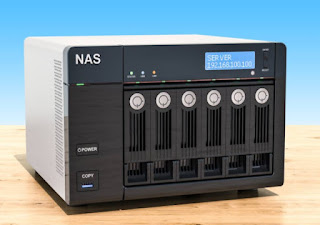Network Security - Internet Content Filtering Primer
Although many businesses have some form of Internet firewall in place, schools have a unique responsibility to provide better Internet content filtering for students using their computers. You can use multiple content filtering methods. This can be used for blocking access to pornography or games, shopping or advertising, email/chat, file transfers, and Websites that offer information about hatred/intolerance weapons drugs gambling, etc.
An blacklist provides
the easiest method for content filtering. A blacklist can be described as
a list containing domains, URLs or filenames that the content filter wants to
block. Playboy.com is one example of a blacklist. It would prevent access to
all subdomains and folders as well as the entire domain. In the case of a
blacklisted URL, such as other
pages of the domain might be available, but that specific page would be
blocked. Wildcards can often block large sets of URLs and
domains. Blacklisting can also help to prevent software installation by
blocking files like */setup.exe. Or to prevent changes to your computer by
blocking potentially hazardous file types like *.dll. Many content filters
also block graphic file types because content filters cannot distinguish art
from porn.
A blacklist can be used to block certain resources. However, a whitelist allows for the following resources to pass the content filter: like a bouncer at the velvetrope, the content filtr blocks all resources not included on the whitelist. Blacklists, whitelists, and both can be used together to offer more specific filtering. A blacklist could block all graphic file types. But, the whitelist could allow images to be uploaded from age-appropriate, moderated, or sponsored image hosting sites. Whitelisting and blacklisting are fast and easy methods to determine whether or no Website should be shown. Although it's not time-consuming, checking a Website against the list is quick and easy. There are also many new websites popping up every day, making it difficult to keep track of all the bad ones cisco Colombia.
What
do we do with the continuous stream of new Websites that are coming online
every day? These are where more sophisticated filtering strategies come
in. Search for particular phrases or words in a webpage can be done using
parsing . The content filter doesn't rely only on filtering by IP address.
It downloads the requested Website (unless blocked by an immediate blacklist)
and reviews every line, looking for bad words and phrases. Although it
acts as a blacklist, the content filter would download the requested Website
and scan for any patterns. This could slow down the process and take up more
time. (In fact I'm quite certain that this article is being blocked by
content filters because it contains the word "sex" in the first
paragraph. However, since Web authors are equally interested in getting their
content past filters, it might also be necessary for them to include strange-seeming
variants such as b00bies or boob!es. Filtering can be set up to block
pages that use any of the negative phrases. The phrases or words may be
assigned points and the filter could block any pages which exceed that
threshold.
context
filtrating is the next type of content
filtering. Word and phrase Parsing isn't very smart. It just acts
upon any pattern that matches the predefined pattern, regardless of
context. It might block pages with the terms "the raw truth" or
'chicken breasts'. Administrators might not care about these contexts but want
to block pages which include the words 'naked breasts' if they are
combined. Even if point values or thresholds are assigned, legitimate
Webpages can be blocked.
One
example is that a Webpage about Breast Cancer could easily reference breasts
enough times for it to reach a point threshold. Many proprietary
algorithms are used for context filtering. They are developed by the different
makers of Internet content filters. The key is to balance speed with
accuracy. Users must be able to download all requested Webpages and quickly
analyze the words to determine whether or not they are acceptable. If they
are too quick to judge they might let through undesirable content (known for
"misses"), or block acceptable content ("false hits"),
while if they are too slow they will be criticized by users for their
latency. The time and money required to create a better algorithm is more
costly. Often, the faster and more accurate filters are more expensive.
This
treatise on Internet Content Filtering is incomplete without mentioning that
other methods and configurations may exist. Virtually all Internet Content
Filters operate on port80 (http); many ignore other protocols. But, some may be
capable to filter out specific ports entirely or apply filtering to other
channels. I wonder which port "World of Warcraft", ...) uses?
Internet
content filters, like firewalls are also available as software or hardware
solutions. Hardware solutions are often referred to as
"appliances", while software solutions are more commonly called
"applications", and "services". Hardware solutions can
be used to centralize administration. They are more costly, but they
handle all filter-related processing. This allows you to free your servers from
these responsibilities. They come often with subscription services for
updates of the blacklist whitelist phrase list and context data. These are
similar to antivirus subscriptions that provide updates on lists of virus
signatures. They could work as multi-homed passthrough gateways or by
redirecting traffic at a designated port or destination IP.
Caching
may be added to higher-end models for faster access to frequently-accessed
resources. Software-based options may be server-based and/or installed on
each workstation. Although server installations have the same centralized
administration features as hardware solutions, they use your RAM and processor
to filter the information, not being a separate appliance. Servers may be
more affordable because they use less RAM and processors. When installing
workstation software, you will need to not only install the software but also
configure each workstation individually. You might also need periodically to
update each workstation.
Microsoft
Internet Explorer also has an easy, free-of-cost, built-in Internet filter. You
can set it up under Internet Options on the Windows Control Panel. It is
perfect for your kid's personal computer or small peer-to–peer network. But
it's not ideal as an enterprise solution. Whether hardware- or software-based,
best-in-class enterprise solutions are often Active Directory-integrated,
simplifying administration and configuration, and permitting filtering settings
to follow users anywhere in the network. Teachers might have more flexible
settings than students, although they could still be blocked if they try to
enter the faculty lounge during recess.




Comments
Post a Comment